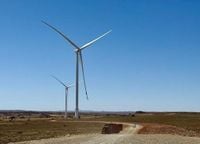In a world grappling with the twin crises of climate change and energy security, a seismic shift has just occurred: for the first time in history, renewable energy sources like wind, solar, and hydropower are generating more electricity globally than coal. This milestone, confirmed by the energy think tank Ember on October 9, 2025, marks a turning point in the battle against fossil fuel dominance and signals a new era for clean energy innovation and policy.
Ember’s latest analysis, discussed in a recent podcast episode released on September 7, 2025, highlights the momentous nature of this achievement. For decades, coal has held its place as the world’s largest single source of electricity generation. But starting this year, renewables have finally surpassed coal overall, a development that many climate advocates have long awaited. According to Ember, "renewable energy generation has overtaken coal globally for the first time on record."
This global transformation is not just a matter of numbers—it’s a testament to the growing consensus that fossil fuels are the primary culprits behind global warming and climate change. Burning coal, oil, and gas releases greenhouse gases, including carbon dioxide, which trap heat in the atmosphere and erode the ozone layer, intensifying the risk of catastrophic climate events. As the International Energy Agency points out, the world’s demand for electricity is soaring, fueled by everything from computers and electric vehicles to air-conditioners and lighting. Meeting this demand sustainably has become imperative, and the latest data shows humanity is finally taking significant steps in the right direction.
Yet, the path to this milestone has been anything but straightforward. The story is riddled with ironies and contradictions. While some developed nations, notably the United States, have recently resumed fossil fuel production, developing giants like China and India have made remarkable progress in curbing their reliance on coal and ramping up their renewable capacity. According to The Assam Tribune, “countries like China and India have made phenomenal progress towards curbing the use of fossil fuels and switching to renewable energy, while a major polluter like the US has resumed the usage and production of fossil fuels.” This reversal of roles challenges long-standing narratives that have often blamed developing countries for environmental degradation, overlooking the West’s historical responsibility dating back to the Industrial Revolution.
But the news is not just about global statistics and policy debates—it’s also about local communities taking concrete action. On October 7, 2025, the Redwood Coast Energy Authority (RCEA) in Humboldt County, California, celebrated the launch of Foster Clean Power, a new solar and battery storage project just outside Arcata. At a ribbon-cutting ceremony attended by local leaders, community members, and project partners, RCEA Executive Director Beth Burks declared, “Foster Clean Power represents a milestone for our community. By combining solar and battery storage, we’re not only producing more clean energy locally but also ensuring that power is available when our community needs it most. This project is proof that renewable energy, environmental stewardship, and community benefit can go hand in hand.”
Foster Clean Power is the first utility-scale project of its kind in the region, combining 7 megawatts (MW) of solar generation with a 2.5 MW/10 megawatt-hour (MWh) battery system. Developed by Renewable America and now owned by Radial Power, the facility is designed to provide enough renewable power for roughly 3,000 homes. Importantly, the project features pollinator habitat to maintain agricultural value and enhance biodiversity on land that was once used for floral farming. “Renewable America is proud to partner with the Redwood Coast Energy Authority on the Foster Clean Power project,” said Ardi Arian, Renewable America President & CEO. “The project integrates solar photovoltaics with one of the safest battery technologies available—lithium iron phosphate—providing a successful clean energy project for the community.”
Local impact is only one piece of a much larger puzzle. On the world stage, innovation is happening at a scale previously unimaginable. At Abu Dhabi Sustainability Week 2025, Masdar—one of the Middle East’s leading renewable energy companies—unveiled what it calls “the moonshot challenge of our time”: the world’s first gigascale 24/7 solar and battery storage project. Developed in partnership with Emirates Water and Electricity Company (EWEC), the project aims to deliver up to 1 gigawatt (GW) of continuous clean power every day, finally addressing the longstanding issue of renewable energy intermittency.
Spanning an area comparable to Manhattan and representing an investment of approximately US$6 billion, this Abu Dhabi project will combine 5.2 GW of solar photovoltaic capacity with a 19 gigawatt-hour (GWh) battery energy storage system. Once operational, it is expected to avoid an estimated 5.7 million tons of carbon emissions annually—contributing nearly a third of the UAE’s 2030 renewable energy targets. Masdar CEO Mohamed Jameel Al Ramahi emphasized the project’s significance, stating it was a “vital step toward addressing the urgent global demand for stable, round-the-clock clean energy.”
These landmark projects—both local and global—underscore a broader trend: renewable energy is not just catching up, but actively reshaping how the world thinks about power generation and sustainability. Falling costs, especially in solar technology, have made renewables increasingly competitive with fossil fuels. According to the Ember analysis, this economic shift is driving political momentum to phase out oil and gas, despite entrenched opposition from some quarters.
Of course, the transition is not without its challenges. Political debates rage on, especially in countries where fossil fuel industries remain powerful economic forces. Climate change skeptics, such as former US President Donald Trump, have dismissed the science as a “hoax,” complicating international efforts to reach consensus. Meanwhile, developing nations argue that they are being unfairly pressured to repair environmental damage largely caused by the industrialization of the West. As The Assam Tribune notes, “the affluent nations of today had enriched themselves even as they destroyed the global environment, and, ironically, are now urging the developing nations to work towards repairing the damage.”
Still, the facts on the ground—and in the air—are impossible to ignore. As more countries and communities invest in renewable infrastructure, the world inches closer to a future where clean energy is the norm, not the exception. Projects like Foster Clean Power and Masdar’s gigascale initiative are not just technological feats; they are proof that with enough willpower, collaboration, and investment, the world can turn the tide on climate change.
With renewable energy now officially outpacing coal on the global stage, the race is on to see how quickly the rest of the world can follow suit. The next chapter in the story of energy will be written not just by policymakers and corporations, but by communities, innovators, and everyday people demanding a cleaner, brighter future.






